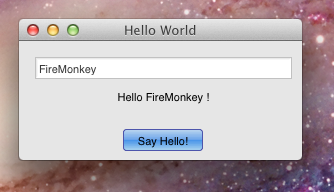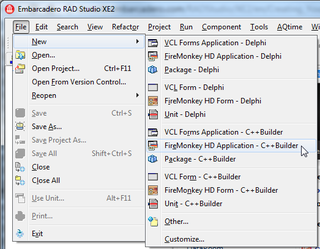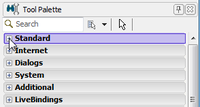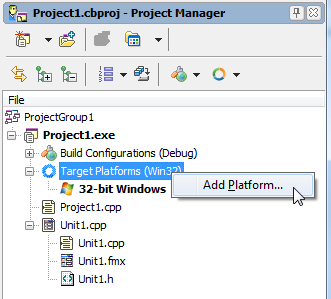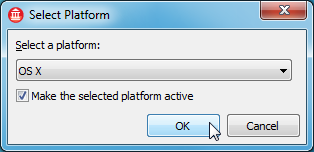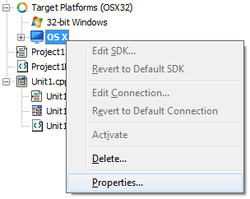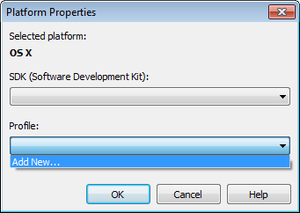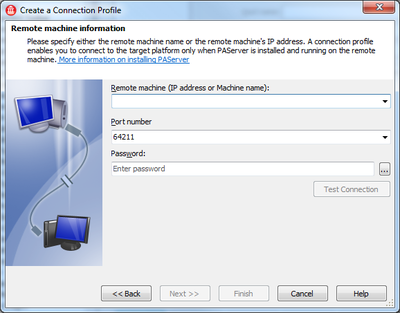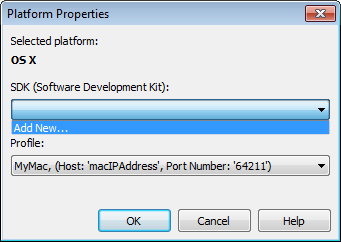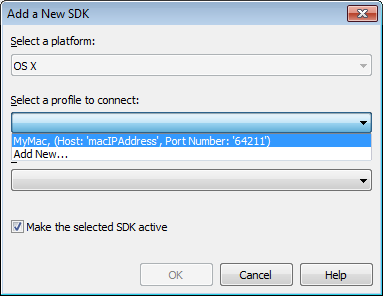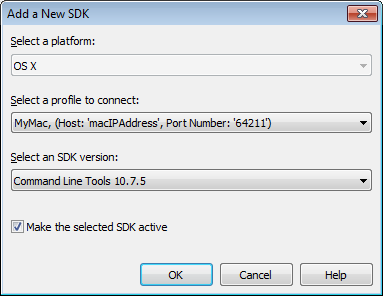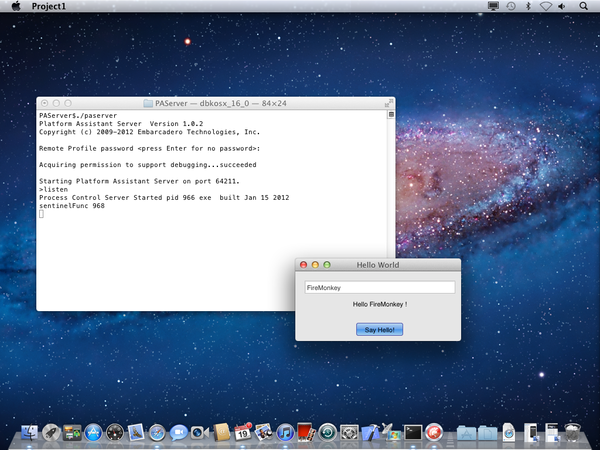Creating Your First FireMonkey Application for Desktop Platforms (C++)
Go Up to FireMonkey Quick Start Guide - Tutorials - My First FireMonkey Application
Contents
In this tutorial, you will create a FireMonkey application that works on 2 different platforms (Windows and OS X) and uses the following user interface elements:
- A Text field to enter a name.
- A button to click to say “Hello”.
- A label to display the message “Hello + <your name>!”.
Your first FireMonkey application will appear as in the screenshots below, for Windows and OS X:
Step 1: Create a New Blank Application
The File menu in the RAD Studio IDE allows you to create a new FireMonkey application. To create a new Blank Application, select File > New > Other > C++Builder Projects > Blank Application.
- Note: If you do not own RAD Studio, but own the individual version of C++Builder instead, the File > New application menu steps described above still apply.
Below is a screenshot of the IDE that shows the 5 different panes that you can dock, undock, or close as you like.
The 5 panes are:
Step 2: Place Components on the FireMonkey HD Form
The first step in creating a FireMonkey application is designing the user interface. There are hundreds of reusable components available in the IDE for creating user interfaces. Move your cursor over the Tool Palette and expand the Standard category by clicking the plus (+) icon. Then select the TEdit component and drop it onto the Form Designer. An instance of the TEdit component will be displayed on the form.
Repeat these steps for adding the TLabel and TButton components onto the form.
Now you should see three components on the Form Designer. Use your mouse to rearrange the components as you like.
You can view and change a component’s properties using the Object Inspector after selecting the component on the form.
Next, visually change the button caption for the TButton component. We will change the TEdit and TLabel properties programmatically by entering some code, as described in Step 3 below.
To change the TButton property as shown in the screenshot above, select the TButton component on the form and change the Text property in the Object Inspector to "Say Hello", and then press Enter to apply the change.
Step 3: Write a Response in C++ Code When a User Clicks a Button
For GUI applications, most of the responses to users’ actions such as button clicks and text field entries can be implemented as a response to an event. In RAD Studio, such responses are referred to as event handlers.
For the TButton component, the most typical event is a button click. When you double-click the button on the Form Designer, RAD Studio creates skeleton code to implement an event handler for the button click event.
Now you can implement responses between the braces of the Button1Click method. Let’s implement a response to show a small dialog that says "Hello + <name entered into the edit box>".
Label1->Text = "Hello " + Edit1->Text + " !";
In C++, the quotation marks that must surround string literals are " ". You can also use the plus (+) sign to concatenate strings.
While you are typing code, some hints indicating the kind of parameter you need to specify will appear. Also, hints will indicate the kinds of members that are supported in a given class.
Step 4: Execute the Application
The implementation of this application is finished, so you can run it. You can click the Run button in the IDE, press F9, or select Run > Run from the RAD Studio main menu.
Once you have executed the application, a form with an edit box and a button will be displayed. Enter text into the edit box, and click the Say Hello button.
Step 5: Supporting OS X
By default, RAD Studio creates applications that target 32-bit versions of the Windows operating system. To add OS X as a target platform, right-click the Target Platforms node in the Project Manager and select Add Platform > OS X. Now your project can be built for both Win32 and OS X platforms.
- Note: Your development environment is on Windows. This means that you cannot run native OS X applications on your Windows machine. You need to connect your IDE to an OS X machine.
To deploy your application to OS X and establish remote debug sessions automatically, RAD Studio provides a tool called Platform Assistant (PAServer).
- Tutorial: Installing PAServer describes the steps to install PAServer on your OS X.
Define a Connection Profile
After you install PAServer on your OS X machine, you can connect your IDE with your Mac, as follows:
- Right-click the OS X node under Target Platforms in the Project Manager, and select Properties.
- Select Add New… from the Profile combo box on the Platform Properties dialog box.
- Enter a name for this profile.
- Specify the name of your Mac (or IP address).
Define an SDK
After you create a connection profile, you can add an SDK to your development system and pull the files from your OS X machine, as follows:
- Right-click the OS X node under Target Platforms in the Project Manager, and select Properties.
- Select Add New… from the SDK combo box on the Platform Properties dialog box.
- Select your new connection profile from the Profile combo box.
- Choose the most basic SDK version, Command Line Tools, from the SDK version combo box.
Step 6: Run the Application on OS X
Now your IDE is connected to your Mac. Press F9 again to run your application on your Mac. Your application should look similar to the one shown in the following image.

